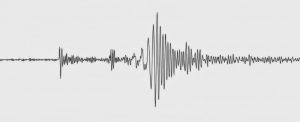
The epicenter of the 3 September 2017 nuclear test explosion in North Korea occurred about 3.6 kilometers northwest of the country’s first nuclear test in October 2006, according to a new high-precision analysis of the explosion and its aftermath.
The study published in Seismological Research Letters by Lian-Feng Zhao of the Chinese Academy of Sciences and colleagues used regional seismic data collected from a number of sources to locate the 2017 test, and to confirm that subsequent seismic events were not also nuclear explosions.
Their paper is published as part of the journal’s special focus section on the September 2017 North Korean explosion. The body-wave magnitude 6.1 underground test by the Democratic People’s Republic of Korea (DPRK) is the largest such test in more than 20 years, and is the sixth declared nuclear test by the DPRK since 2006. The September explosion is an order of magnitude larger than the next largest test by the country, which occurred in September 2016.
Zhao and colleagues used seismic wave data from 255 seismograph stations in the China National Digital Seismic Network, Global Seismic Network, International Federation of Digital Seismograph Networks and Full Range Seismograph Network in Japan to investigate the explosion and three other seismic events that occurred in the minutes and days after.
Although global seismic networks may pick up the signal of underground nuclear tests, the signals they detect are often too weak to be to be used in the kind of location analysis performed by Zhao and colleagues. “The closer to the sources the better,” said Zhao. “However, seismometers cannot be deployed in the North Korean test site due to political issues. Thus, seismologists have developed methods that can be applied to regional seismic data to investigate seismic characteristics of the underground nuclear explosions.”
The researchers used seismic data from the first DPRK nuclear test as the “master event” to calibrate their location analysis, since the epicenter of that small explosion could be visually located using satellite images of localized ground surface damage. The much larger September 2017 explosion produced surface damage over an area about nine square kilometers, however, in ground that was already disturbed by previous nuclear tests. “For example, after the sixth North Korean nuclear test, large displacements occurred on the west and south flank [of the test site] and debris flows were localized in pre-existing channels,” Zhao explained. “These spatially distributing phenomena made it difficult for us to directly determine the epicenter of the explosion.”
Zhao and colleagues used regional seismic data instead to calculate that the epicenter of the September 2017 explosion was at 41.3018°N and 129.0696°E. A seismic event that took place about eight minutes after the explosion occurred very close to the explosion epicenter—less than 200 meters away—and probably represents the seismic signature of the collapse of a cavity left by the underground explosion, the researchers suggested.
Two subsequent seismic events, one on 23 September and one on 12 October, were located about eight kilometers northeast of the nuclear test site. Zhao and colleagues said that the seismic signatures of these two events indicate that they are not explosions, but may have resulted from mechanisms such as landslide or ground collapse. They may also be very shallow natural earthquakes that were triggered by the explosion, they noted, a possibility that will require more research on the pre- and post-explosion stresses on the faults where the events occurred.
Reference:
“High-precision Relocation and Event Discrimination for the September 3, 2017 Underground Nuclear Explosion and Subsequent Seismic Events at North Korean Test Site,” DOI: 10.1785/0220180164
Note: The above post is reprinted from materials provided by Seismological Society of America.










